At Friends Academy, Community Service Is Part of the Solution
12-10-25
Subscribe
Close
Fill out the form below to receive updates on the latest and greatest within the Friends Academy community.
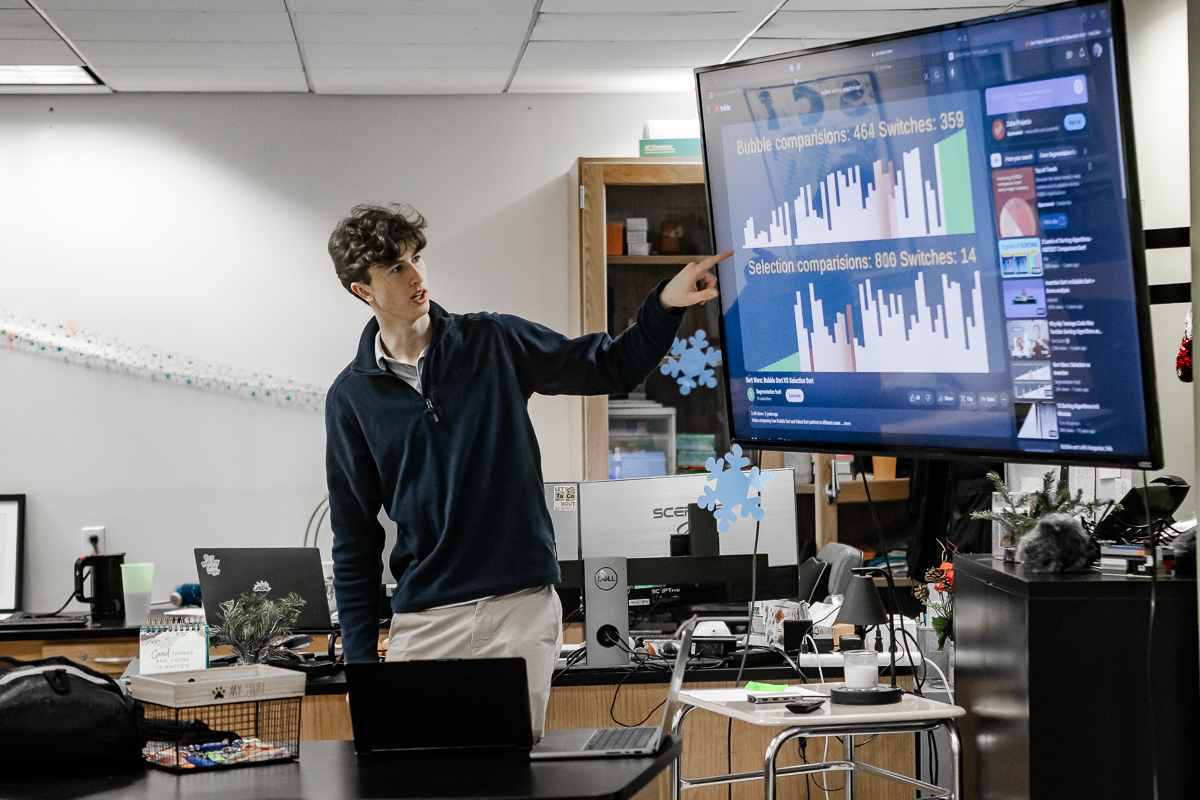
With laptops stowed, Upper School Computer Science teacher Pati Castillo reminds her students to offer their undivided attention as their classmates begin to tee up presentations in her Post-AP Comp Sci course. And the class delivers – with their own sort of built-in camaraderie and comp sci humor.
In this second-year college course, participants are both the student and teacher, novice and expert, as they work their way through a steady stream of sophisticated topics. Today’s presentations delve into sorting algorithms and students are challenged to explain four of the major sorts, including those of Bubble Sort, Selection Sort, Insertion Sort, Quick Sort, and Merge Sort.
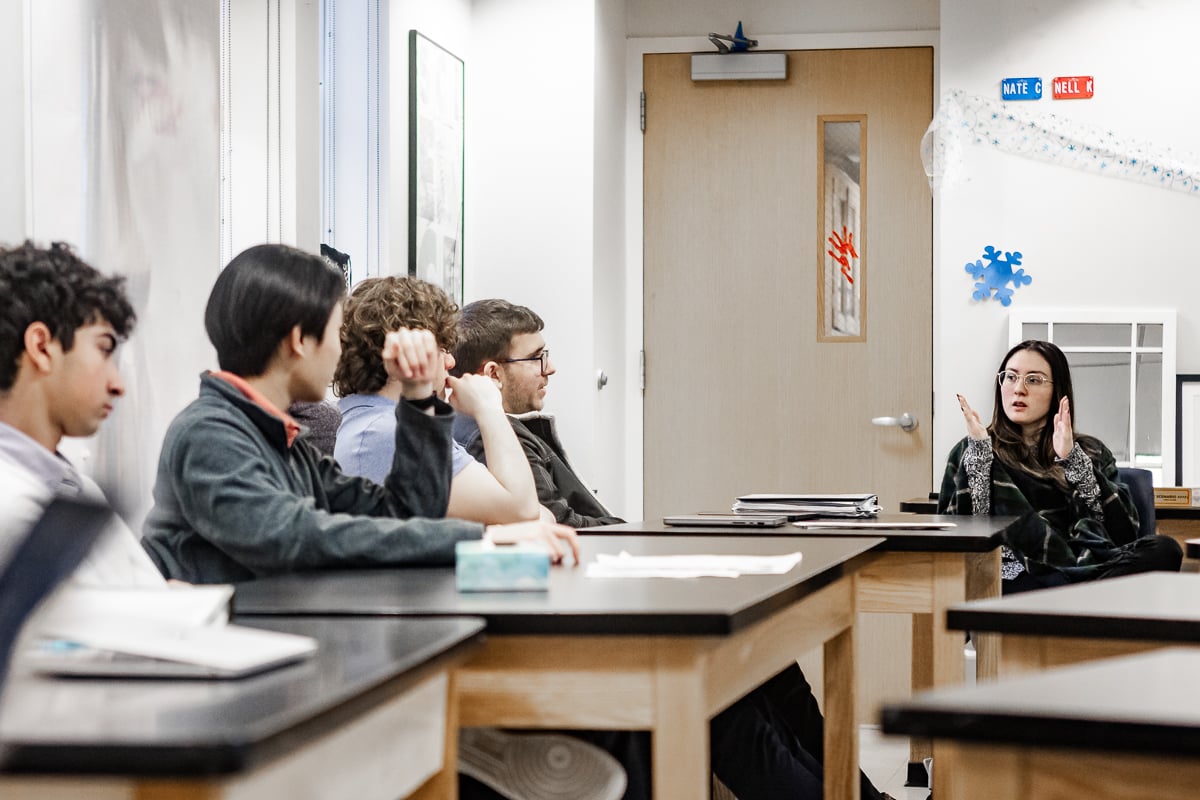
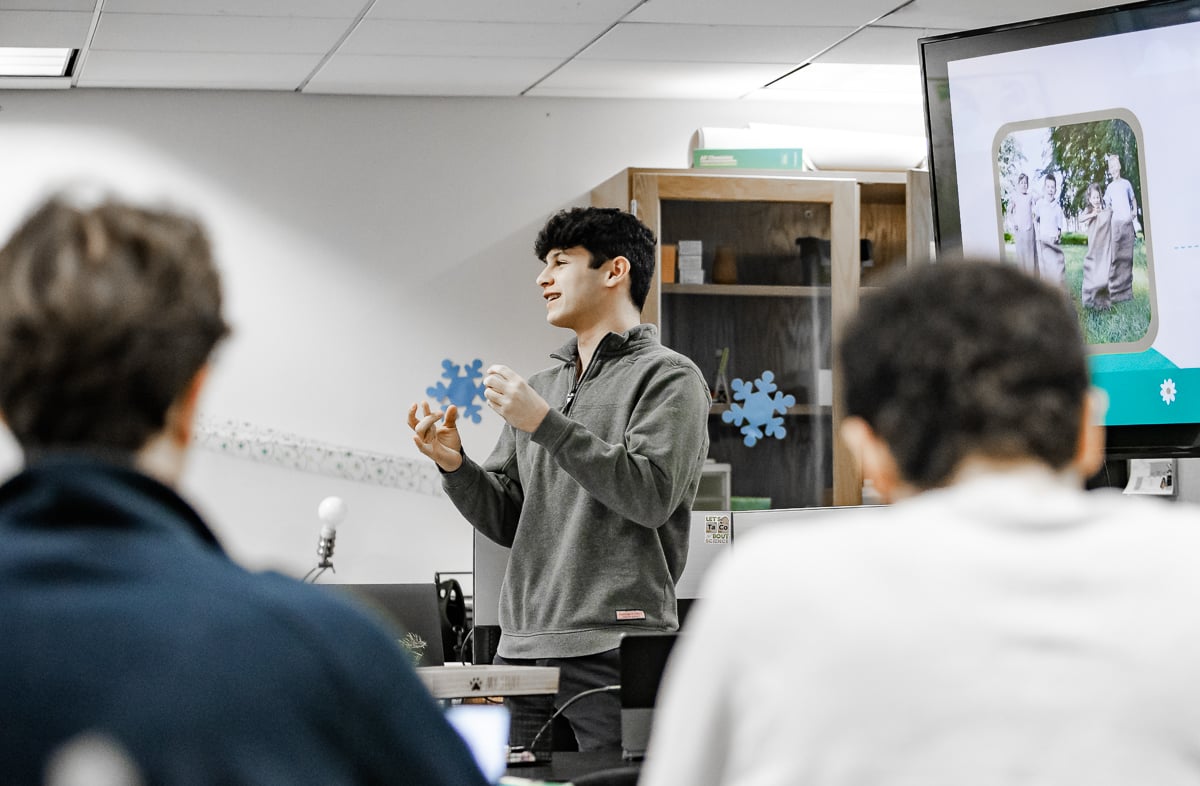
As each student takes his or her turn at the front of the class, it is soon evident that a deeper intellectual culture is driving the learning process. “Where does the name Bubble Sort come from?” asks one student as another looks up video resources to help explain the sequencing. Whiteboard demonstrations add clarity as more questions flow from the student audience.
“How would you finish off an algorithm?”
“Could you explain why it is O(N logN) for all cases?”
“Is there a best pivot to choose?”
“So Selection Sort is like an optimized Bubble Sort?”
“Hearing different interpretations of the same concepts from different students reinforces their learning,” explained Ms. Castillo. “My method is that if you can teach or explain it in various forms and to people with different levels and abilities, then you know the material and you will be able to defend yourself,” she said. “It’s really helpful because a lot of programming questions for interviews are based on this class,” she added.
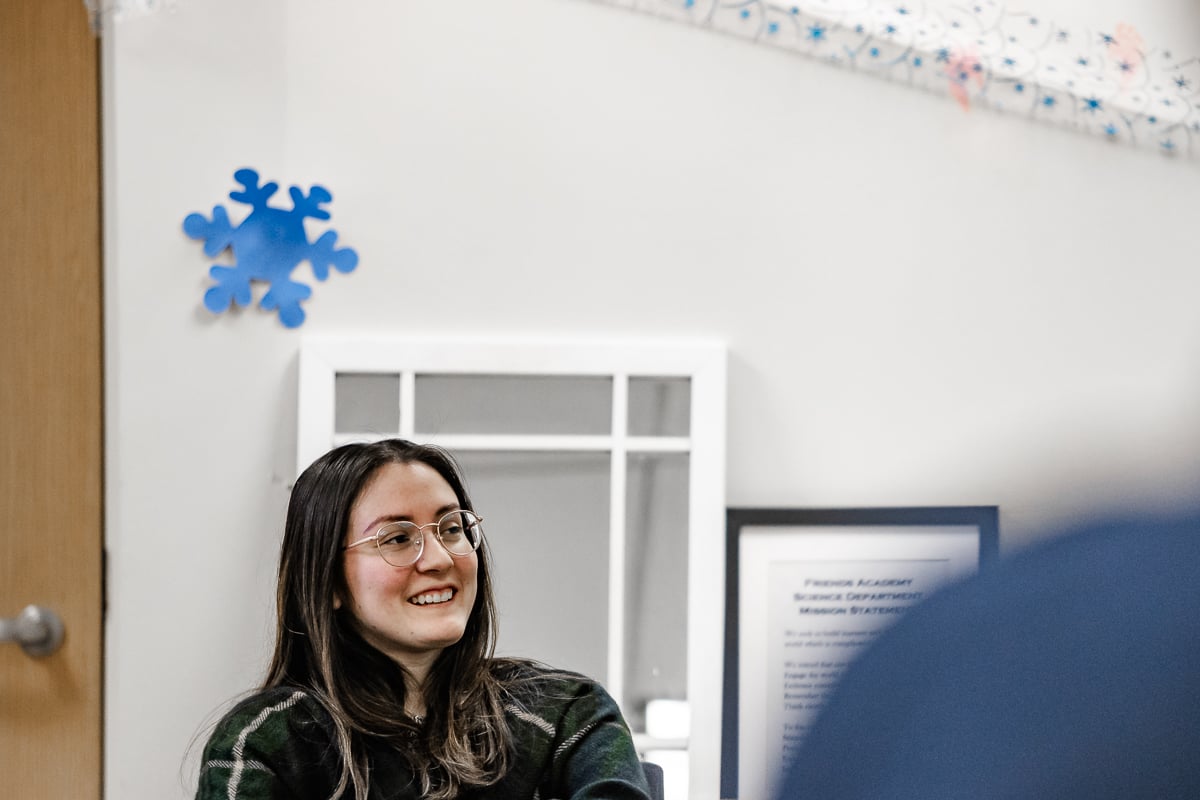
The Post-AP class changes with every new school year; in 2023-24, the class covers data structures and algorithms. Last year, students studied circuitry with Arduino boards, which are little computers. To take the class, students must have taken AP Comp Sci and received a 3 or higher on their AP Exam.
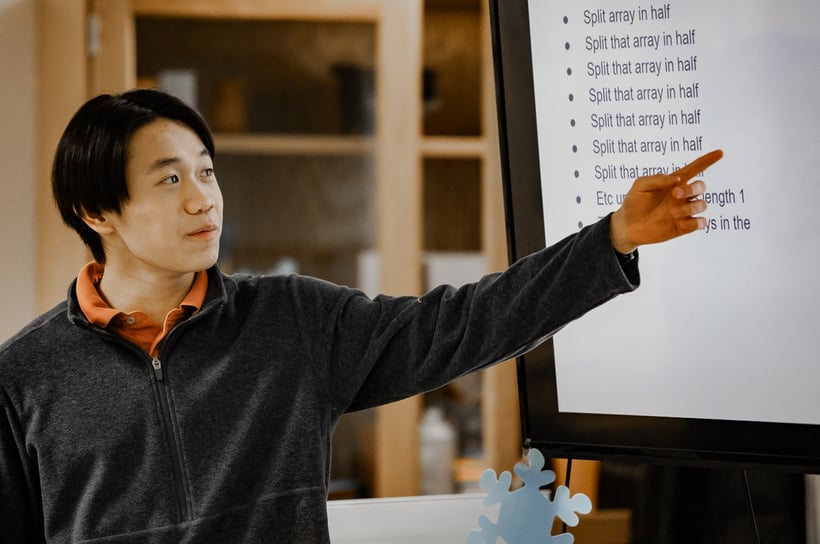
“The idea is for students to go through different sets of data structures, learn the math behind it, and then be able to program in it,” synthesized Ms. Castillo, who regularly brings in real-world applications; in this case asking students to consider what data their algorithms might be used for – zip codes, phone numbers, library books, and Commerce. “In this unit, we go into the sorting curriculum; it’s more about what would be the best case to choose one algorithm over another. In the real world, it’s done for you, but you need to be able to explain it,” she pointed out. “It’s a fast-paced class that asks students to undertake a good deal of self-studying and to know how to decipher and discern a college-level textbook,” she added.
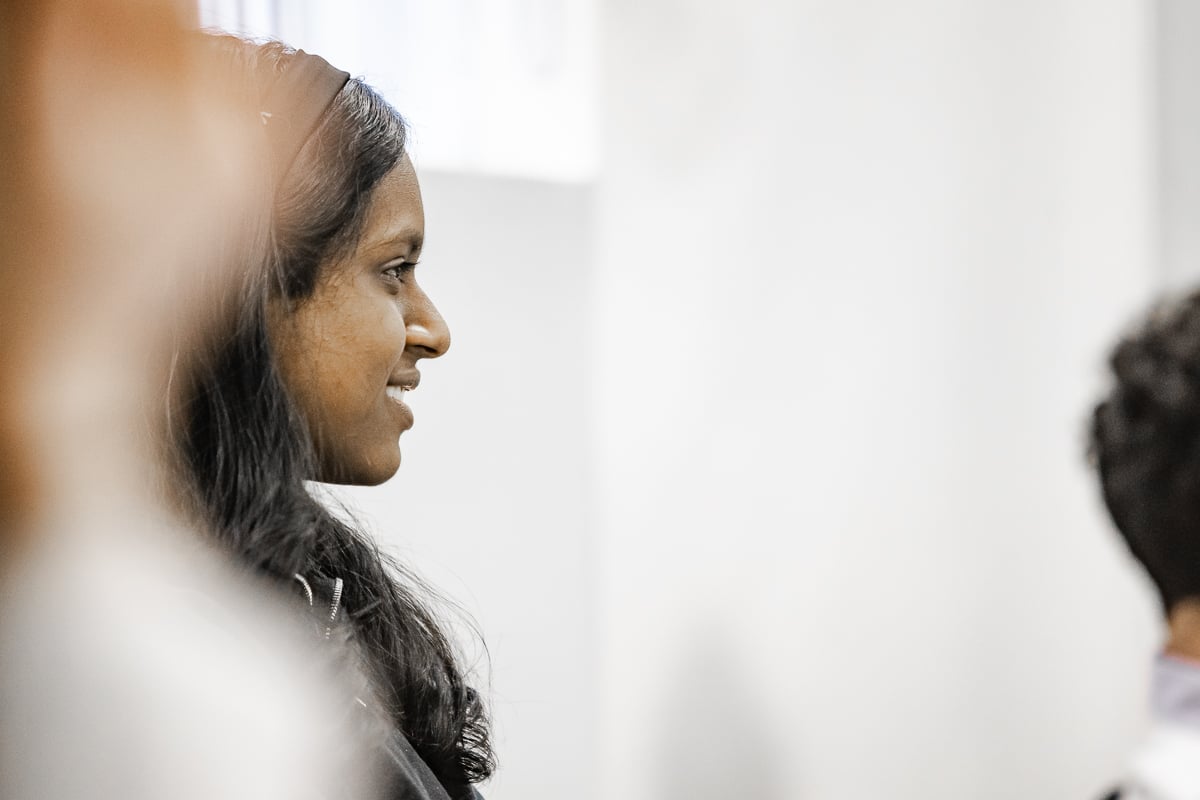
As pairs of students practice problem sorts and then apply reverse engineering, Ms. Castillo recognizes how teaching and learning in a Quaker school deepens even the strictest AP content.
“In Comp Sci, you need to be able to take abstract thoughts and put them into a program and, in this unit, understand why different programs choose one set over another. To achieve this, we can work within a culture that comes from attending a Quaker school. Students don’t raise their hands, they wait for each other to speak. At the same time, they are good at talking to each other, rather than at each other. And they make space for a classmate who might be challenged to build upon it by themself with guidance and support from peers who at that moment have a better understanding,” revealed Ms. Castillo.
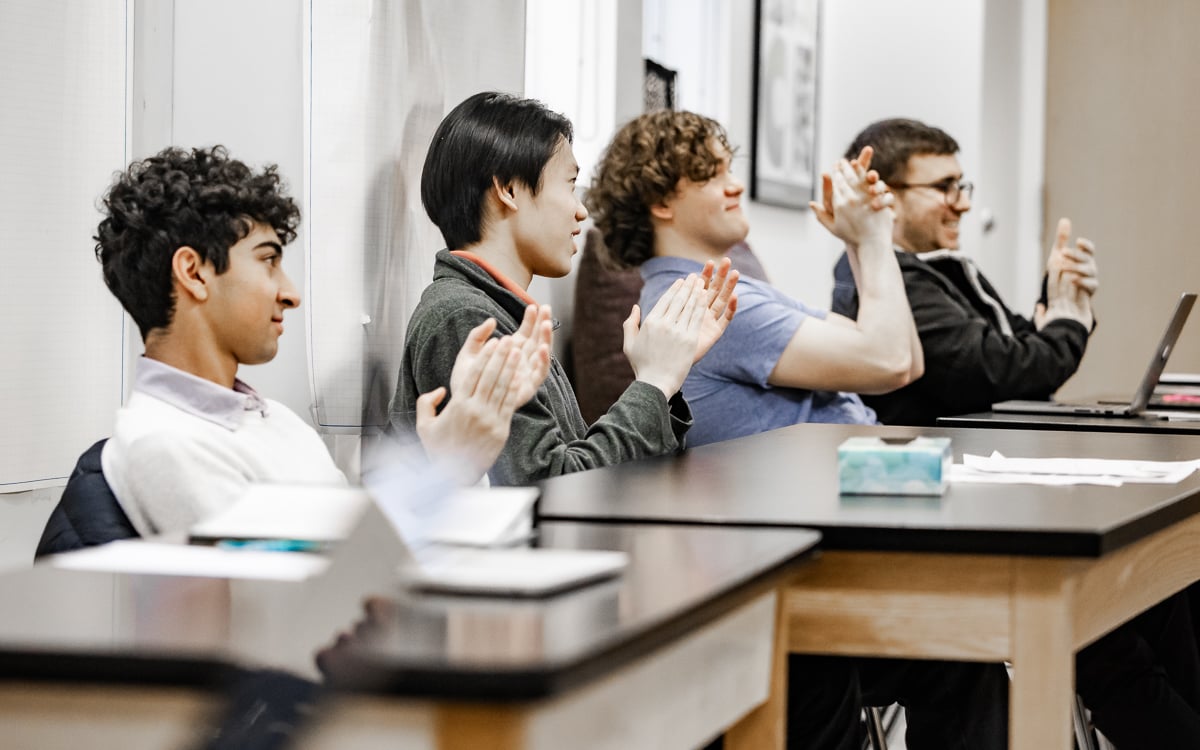
This particular class has grown to be one of Ms. Castillo’s favorites. “They enjoy the material and are always curious to learn more,” she praised. “And I love their energy, personality, their friendship – and how it has grown.”
Photography by Alvin Caal/Friends Academy
Did you enjoy this post? Here are a few more we think you'd be interested in:
Fill out the form below to receive updates on the latest and greatest within the Friends Academy community.